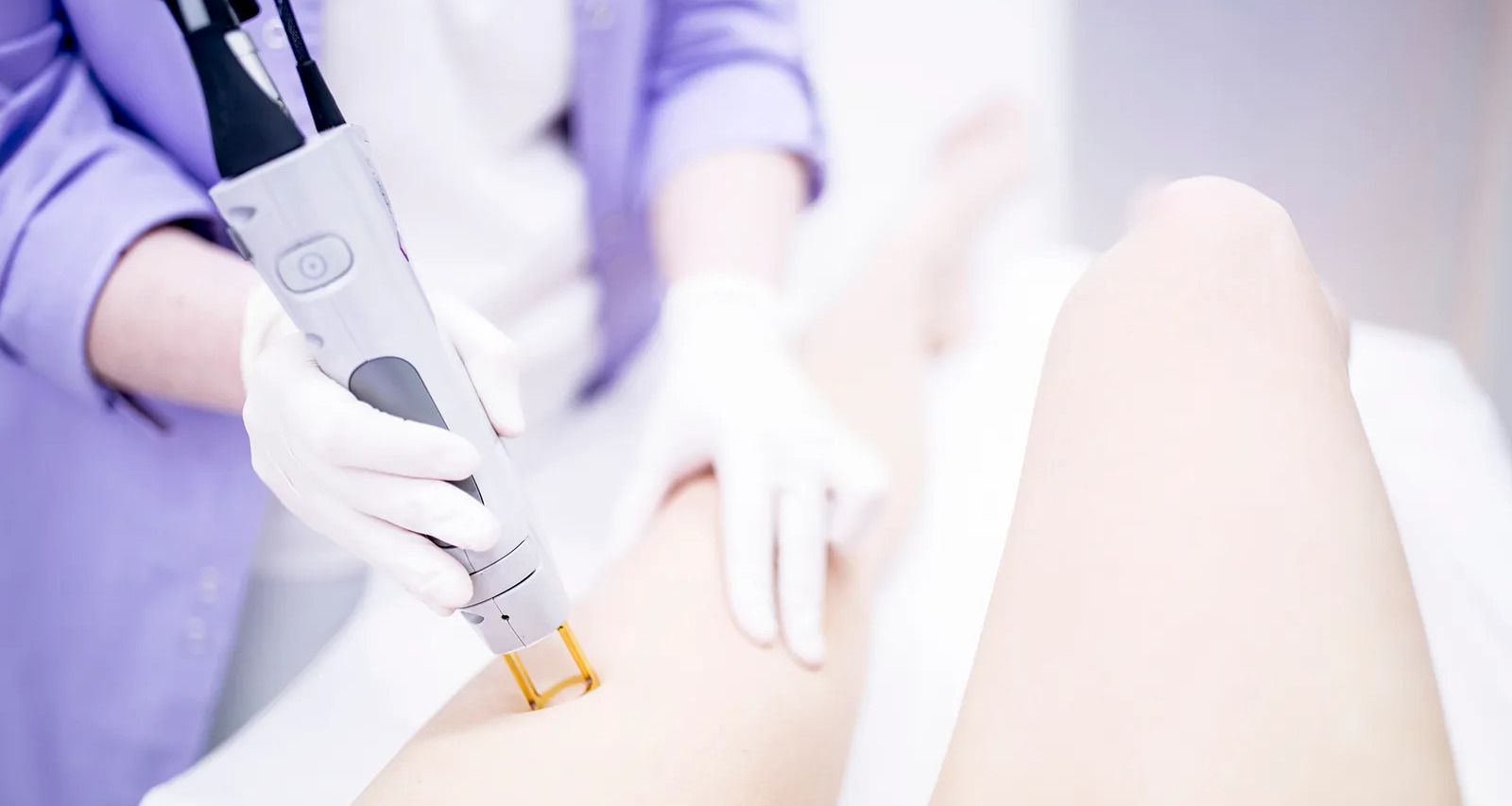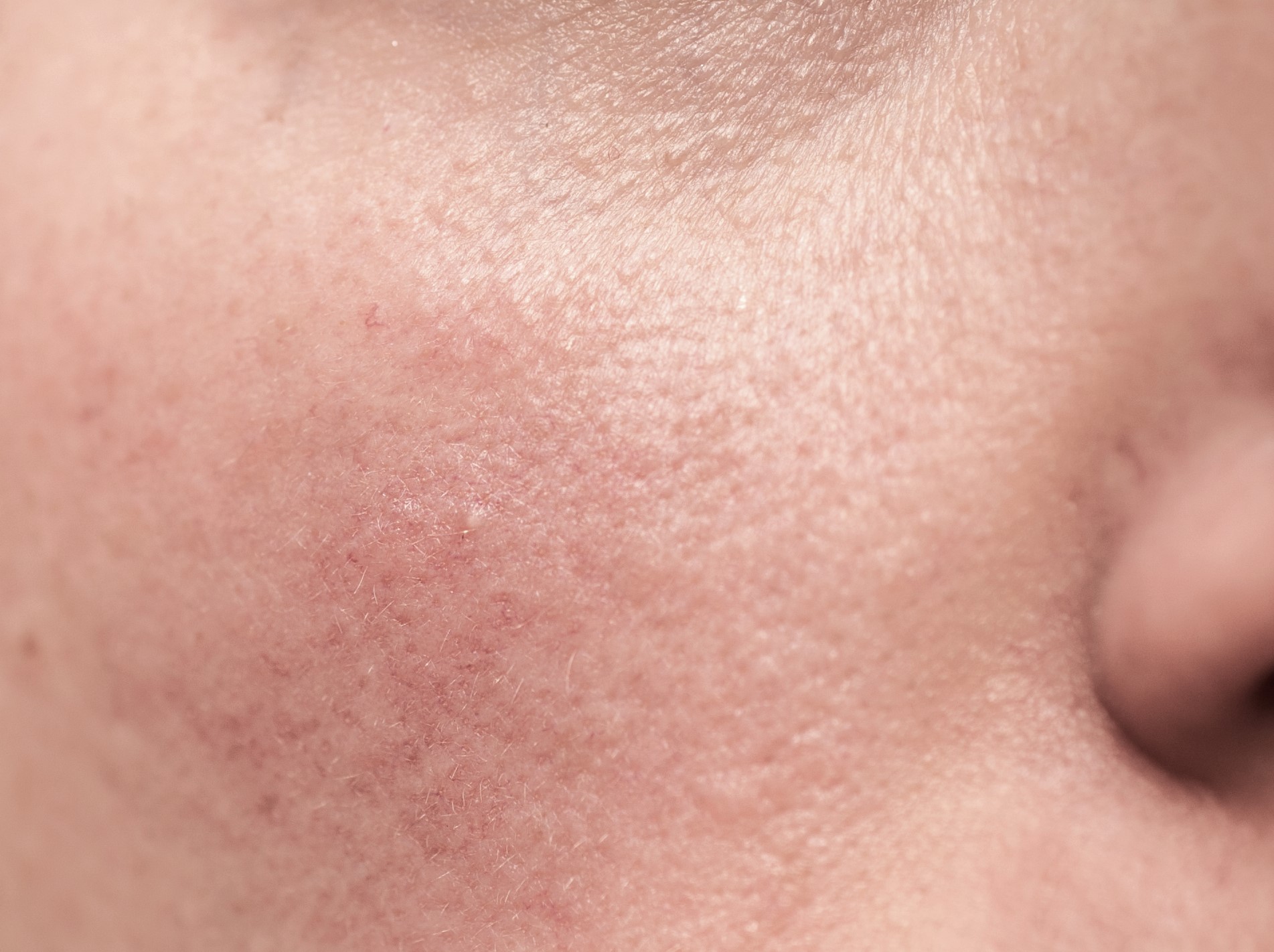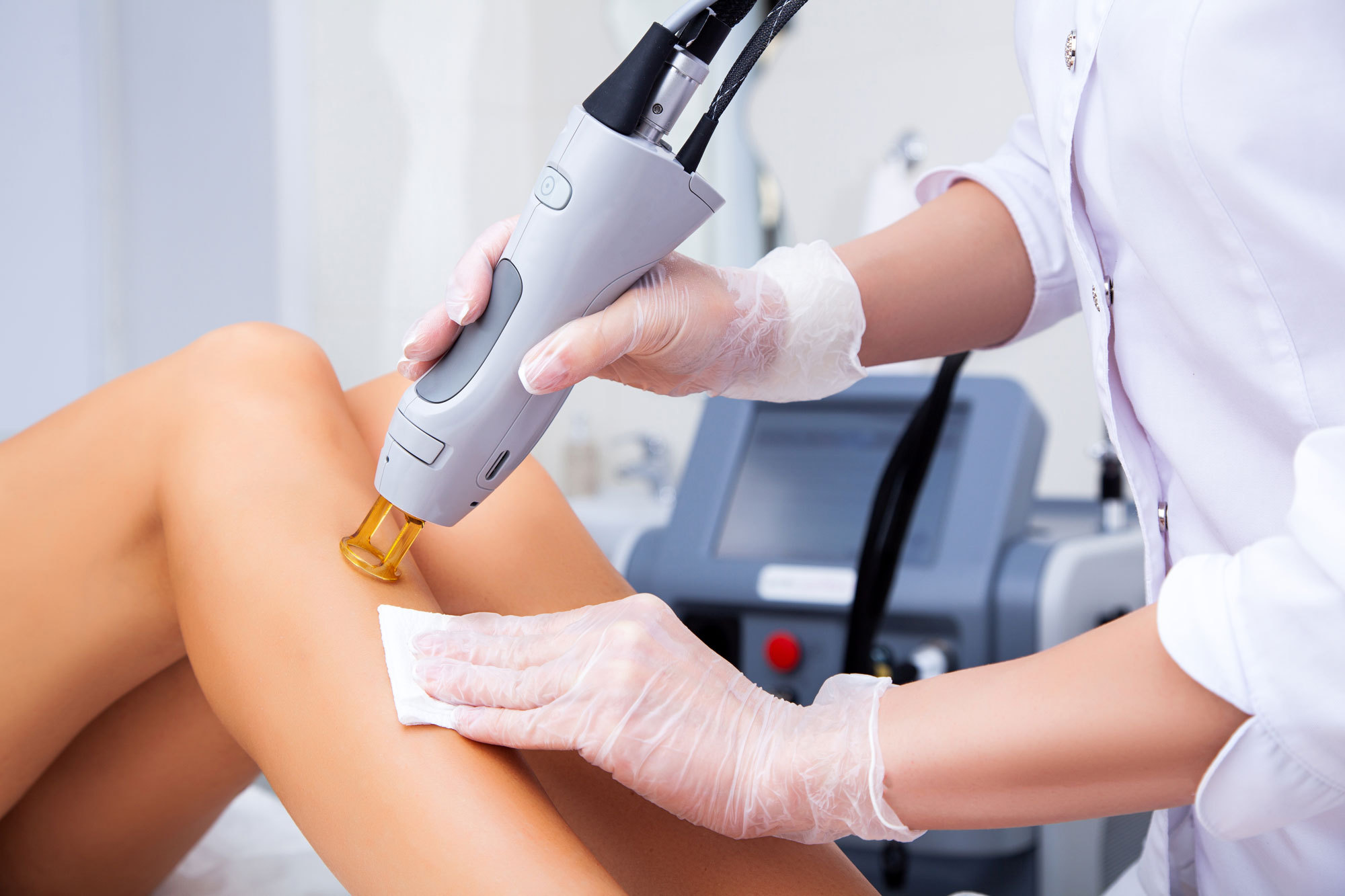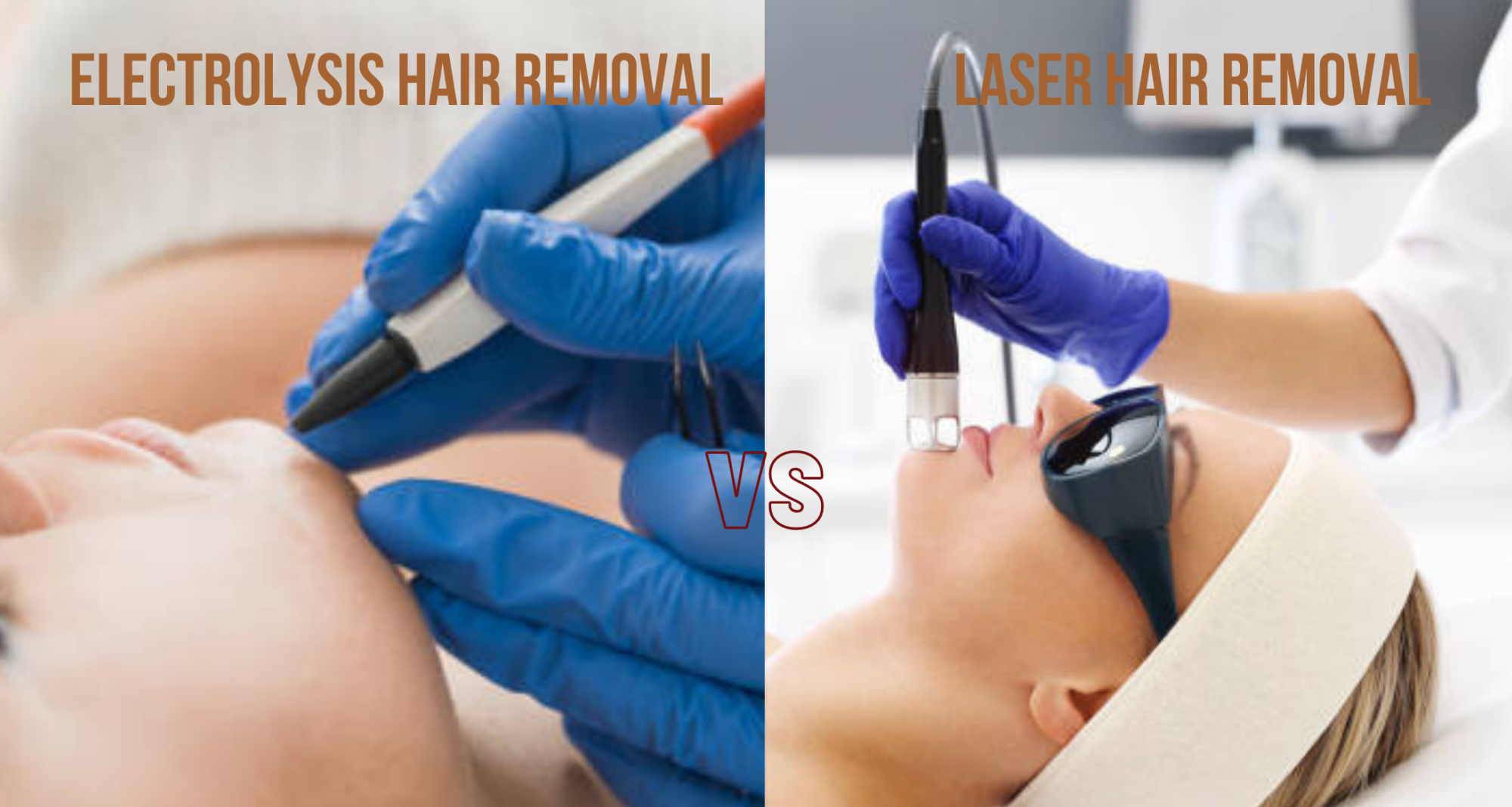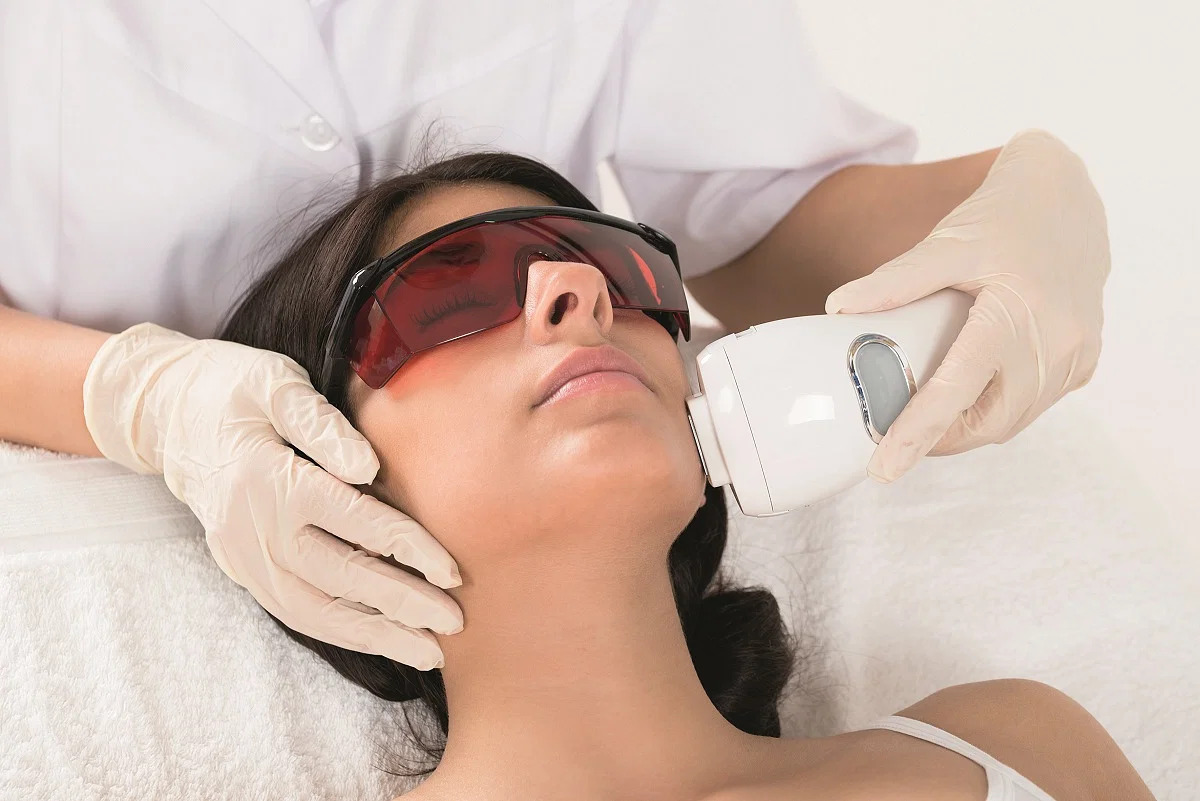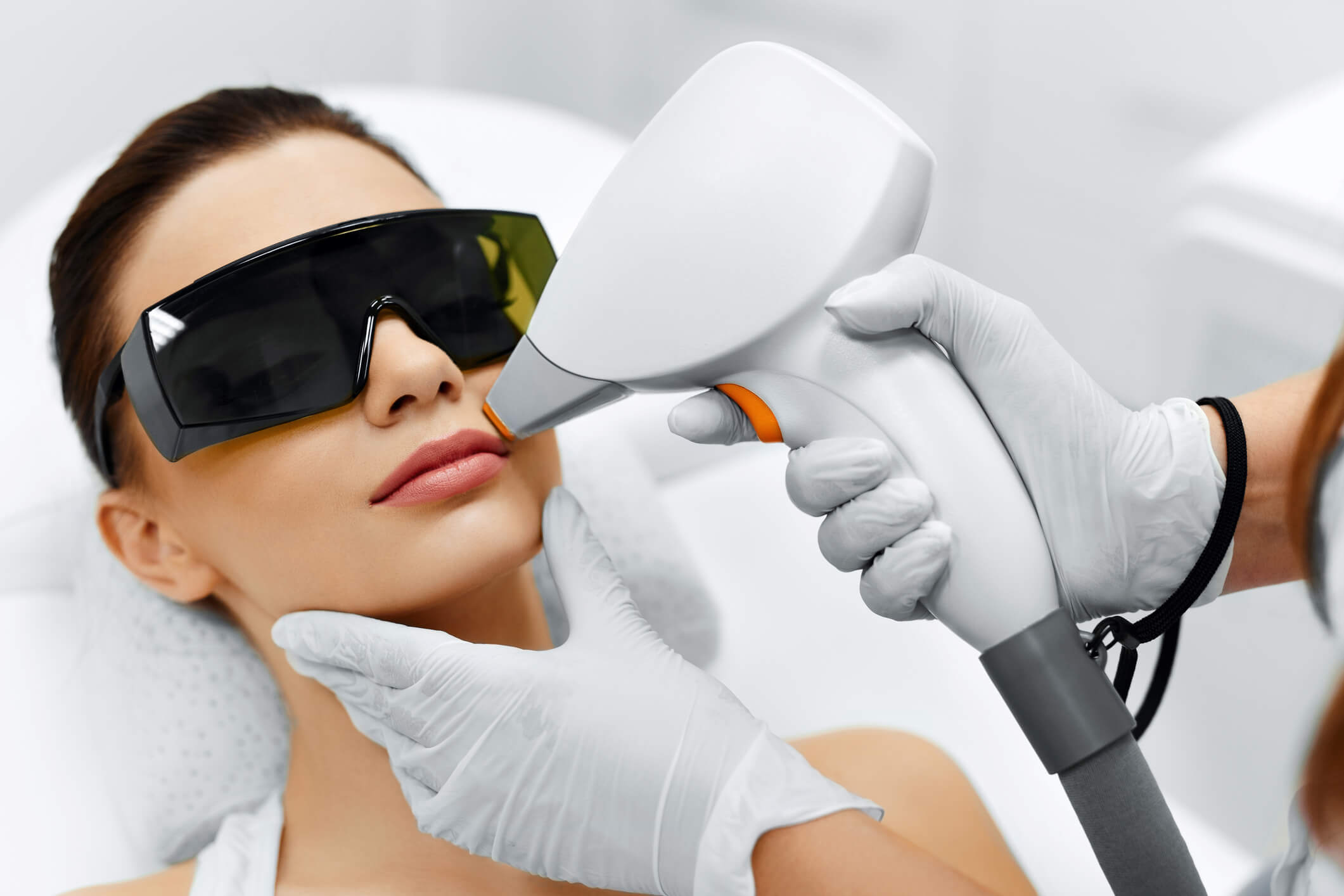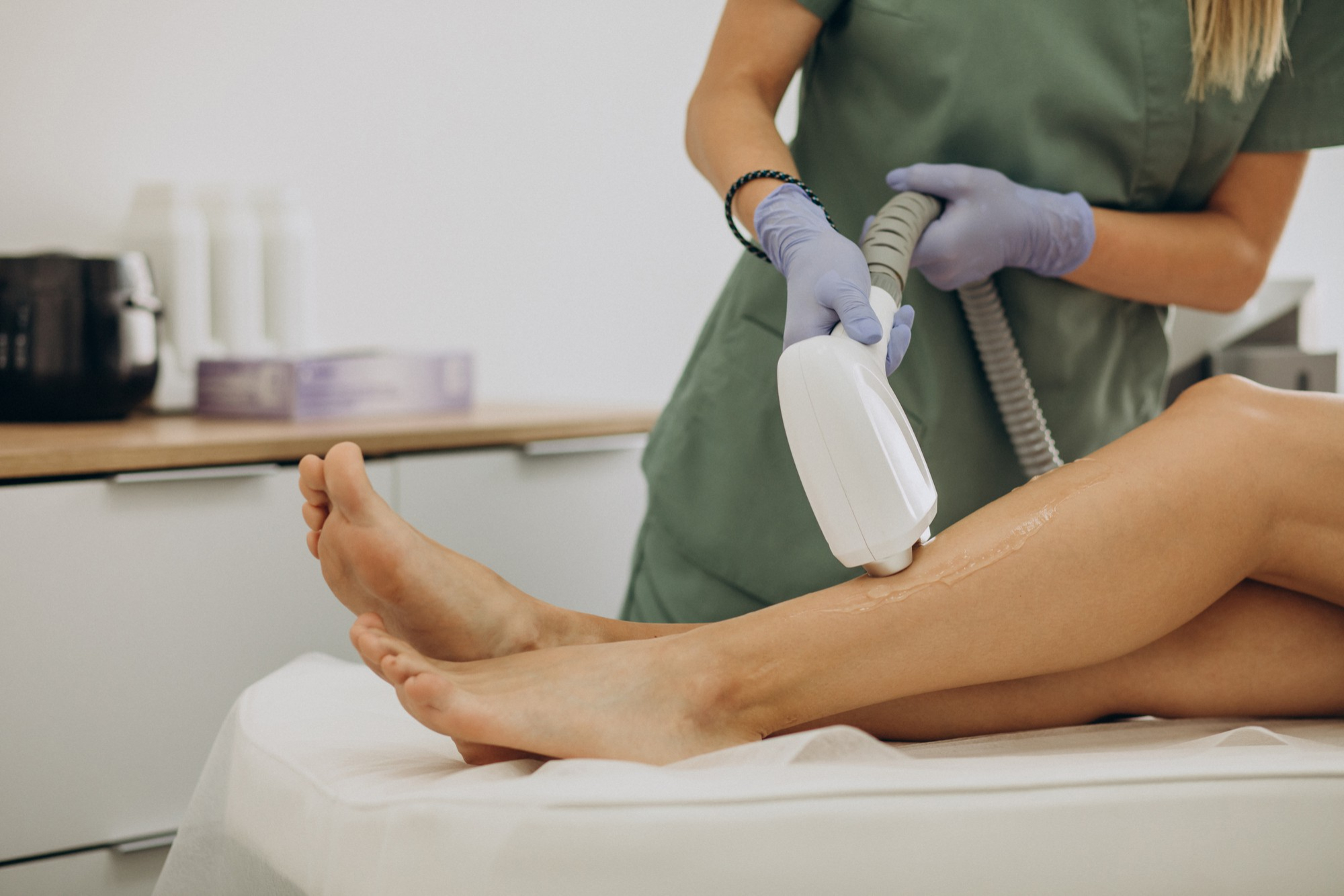

FAQs
Laser Hair Removal: What To Know And Expect
Modified: September 23, 2023
Get all the answers to your general questions about laser hair removal, including what to expect, how it works, and the benefits of this popular treatment.
(Many of the links in this article redirect to a specific reviewed product. Your purchase of these products through affiliate links helps to generate commission for Under-tec.com, at no extra cost. Learn more)
Table of Contents
Introduction
Laser hair removal has become an increasingly popular method for achieving long-lasting hair reduction. Whether you’re tired of the hassle of constant shaving and waxing or simply want to get rid of unwanted hair permanently, laser hair removal offers an effective solution.
In this article, we will explore the ins and outs of laser hair removal, including how it works, its benefits, potential risks and side effects, and what to expect before, during, and after the procedure. By the end, you’ll have a comprehensive understanding of laser hair removal and be equipped with the knowledge to make an informed decision.
Laser hair removal utilizes concentrated beams of laser light that target the pigment in the hair follicles. The heat from the laser damages the hair follicles, inhibiting future hair growth. Unlike other hair removal methods, such as shaving or waxing, which provide temporary results, laser hair removal offers a more permanent solution.
One of the main benefits of laser hair removal is its precision. The laser targets only the hair follicles and leaves the surrounding skin undamaged. This makes it suitable for various areas of the body, including the face, underarms, legs, bikini area, and back. Additionally, laser hair removal is a time-saving option, as it can treat multiple hair follicles simultaneously in a fraction of the time it takes to shave or wax.
While laser hair removal offers numerous advantages, it’s important to note that there are potential risks and side effects associated with the procedure. Some individuals may experience temporary discomfort, redness, or swelling after treatment. However, these usually subside within a few hours or days. In rare cases, more severe side effects, such as burns, blisters, or changes in skin pigmentation, may occur. Therefore, it’s crucial to choose a reputable and experienced professional to perform the procedure to minimize these risks.
Before undergoing laser hair removal, there are several preparations to consider. These may include avoiding sun exposure and tanning beds, discontinuing the use of certain medications, and refraining from plucking or waxing the targeted area. Your healthcare provider or laser technician will provide specific instructions tailored to your individual circumstances.
During the procedure, you can expect to wear protective eyewear to shield your eyes from the laser light. The technician will move a handheld laser device over the treatment area, delivering controlled bursts of laser energy. While the sensation can vary from person to person, many describe it as a slight snapping or stinging feeling. Some individuals may also experience a mild burning sensation, similar to a sunburn. However, most people tolerate the treatment well and find the discomfort to be manageable.
After the procedure, you will be provided with aftercare instructions to promote healing and reduce the risk of complications. These may include avoiding sun exposure, applying soothing creams or lotions, and avoiding activities that may cause excessive sweating. It’s important to follow these instructions closely to optimize your results and minimize any potential side effects.
How Does Laser Hair Removal Work?
Laser hair removal works by targeting the pigment in the hair follicles with concentrated beams of laser light. The energy from the laser is absorbed by the pigment, which then heats up and damages the hair follicle, inhibiting future hair growth.
The process begins with the technician adjusting the laser to match the color and thickness of your hair, as well as the location and size of the treatment area. This ensures the most effective and precise treatment. Before the laser is applied, a cooling gel or spray may be used to protect the skin and minimize discomfort.
Once the treatment begins, the technician will pass a handheld laser device over the targeted area. The laser emits pulses of light that are absorbed by the hair follicles. This process can be slightly uncomfortable, with some individuals describing it as a snapping or stinging sensation. However, most people find it tolerable, especially considering the long-term benefits it offers.
The laser energy heats up the hair follicle, damaging its ability to produce new hair. This process specifically targets the active growth phase of the hair follicle, known as the anagen phase. Since not all hair follicles are active at the same time, multiple treatment sessions are typically required to catch each individual hair follicle in the optimal growth phase.
It’s important to note that laser hair removal is most effective on individuals with darker hair and lighter skin tones. This is because the laser targets the pigment in the hair follicles, so a higher contrast between the hair and skin color allows for better absorption of the laser energy. However, advancements in laser technology have made it possible to safely and effectively treat a wider range of skin and hair types.
The duration of each laser hair removal session can vary depending on the size of the treatment area. Smaller areas, such as the upper lip or underarms, may only take a few minutes, while larger areas, like the legs or back, may take up to an hour. The number of sessions needed for optimal results can range from four to eight, with intervals of four to six weeks between each session.
It’s important to remember that while laser hair removal can significantly reduce hair growth, it may not guarantee permanent hair removal. Some hair follicles may regrow over time, especially those affected by hormonal changes. However, the regrowth is typically finer and lighter in color, making it less noticeable than before. Many individuals find that occasional touch-up sessions are sufficient to maintain the desired results.
Benefits of Laser Hair Removal
Laser hair removal offers several benefits that have contributed to its popularity as a preferred method of hair reduction. Here are some of the key advantages of opting for laser hair removal:
-
Long-lasting Results: Unlike temporary hair removal methods like shaving and waxing, laser hair removal provides long-lasting results. By targeting the hair follicles, it can significantly reduce hair growth in the treated areas. With multiple sessions, many individuals experience a permanent reduction in hair growth.
-
Time-saving: Laser hair removal is a time-efficient option for hair reduction. Unlike the time-consuming process of shaving or waxing, laser treatment can cover larger areas in a shorter amount of time. This makes it a convenient choice for those who want to minimize grooming time.
-
Precision: Laser hair removal offers precision in targeting the hair follicles while leaving the surrounding skin undamaged. This precision makes it suitable for various areas of the body, including the face, underarms, legs, bikini area, and back.
-
Reduced Ingrown Hairs: Ingrown hairs are a common problem with traditional hair removal methods. Laser hair removal reduces the occurrence of ingrown hairs by destroying the hair follicles, preventing hair from growing back and becoming trapped beneath the surface of the skin.
-
Smoother Skin: After laser hair removal, the skin in the treated areas tends to become smoother and softer. The absence of frequent shaving or waxing minimizes skin irritation, razor burns, and bumps.
-
Cost-effective: Although laser hair removal may have a higher upfront cost compared to temporary methods, it can be more cost-effective in the long run. With long-lasting results, individuals can save money on regular waxing appointments, razors, and depilatory creams.
-
Freedom from Daily Maintenance: Laser hair removal provides individuals with the freedom from the daily hassle of shaving or waxing. It eliminates the need for constant hair removal, allowing people to enjoy smoother skin with minimal effort.
It’s worth noting that the effectiveness and experience of laser hair removal can vary depending on individual factors such as hair color, skin type, and hormonal changes. Consulting with a qualified professional can help determine whether laser hair removal is the right choice for you and what results to expect.
Potential Risks and Side Effects
While laser hair removal is generally considered safe, there are potential risks and side effects that individuals should be aware of before undergoing the procedure. It’s important to note that these risks and side effects are typically temporary and can be minimized by choosing a reputable and experienced professional to perform the treatment.
Some of the potential risks and side effects of laser hair removal include:
-
Discomfort: During the procedure, some individuals may experience mild discomfort, which can vary depending on their pain threshold. Most describe the sensation as a slight snapping or stinging feeling. However, newer laser technologies often incorporate cooling systems to minimize discomfort during treatment.
-
Redness and Swelling: It’s common to experience redness and swelling in the treated area immediately after the procedure. This is a normal reaction and usually subsides within a few hours or days.
-
Skin Pigment Changes: In rare cases, laser hair removal can cause changes in skin pigmentation. The skin in the treated area may become darker or lighter, especially in individuals with darker skin tones. This is usually temporary but can persist for a few weeks or months. It’s crucial to disclose any history of skin conditions or sensitivities to your technician to minimize the risk of pigmentation changes.
-
Burns and Blisters: Although uncommon, burns and blisters can occur if the laser is used improperly or the parameters are set too high for your skin type. To prevent burns, it’s crucial to choose a reputable clinic and ensure that the technician is well-trained and experienced in performing laser hair removal.
-
Scarring: While rare, there is a minimal risk of scarring from laser hair removal. This is more likely to occur in individuals with underlying skin conditions or those who do not follow proper aftercare instructions.
To minimize these risks and side effects, it’s essential to follow all pre- and post-treatment instructions provided by your healthcare provider or laser technician. This may include avoiding sun exposure, refraining from plucking or waxing the treatment area, and taking certain medications as advised.
It’s also crucial to have realistic expectations about the results. Laser hair removal offers permanent hair reduction, but it may not guarantee complete removal of all hair follicles. Periodic touch-up sessions may be necessary to maintain the desired results over time.
If you experience any concerning or prolonged side effects after laser hair removal, it’s important to contact your healthcare provider or the clinic where the procedure was performed for guidance.
Preparing for Laser Hair Removal
Preparing for laser hair removal is an important step to ensure the effectiveness and safety of the procedure. By following these guidelines, you can maximize your results and minimize potential risks or complications:
-
Avoid Sun Exposure: It’s recommended to avoid excessive sun exposure and tanning beds before your laser hair removal appointment. Sunburned or tanned skin is more sensitive and can increase the risk of complications during treatment. If you cannot avoid sun exposure, make sure to use a broad-spectrum sunscreen with a high SPF to protect your skin.
-
Avoid Plucking or Waxing: For at least four weeks leading up to your laser hair removal session, avoid plucking, waxing, or any hair removal methods that remove the hair from the root. These methods disrupt the hair growth cycle, and laser hair removal targets the hair follicle, so it’s essential to have hair in the follicles for the treatment to be effective.
-
Shave the Treatment Area: However, on the day of your appointment, it’s recommended to shave the treatment area the night before or on the day of the procedure. This ensures that the laser energy targets the hair follicles directly, rather than the hair above the skin surface.
-
Avoid Certain Medications and Topical Products: Some medications and topical products can increase skin sensitivity or interfere with the effectiveness of laser hair removal. Before your appointment, consult with your healthcare provider and inform the laser technician about any medications or topical products you are using. They will advise you on whether to discontinue or adjust usage leading up to the treatment.
-
Discuss Any Skin Conditions or Sensitivities: Inform your laser technician about any existing skin conditions, such as eczema, psoriasis, or dermatitis. This will help them determine the appropriate laser settings and customize the treatment to minimize potential side effects.
-
Research and Choose a Reputable Clinic: Laser hair removal should be performed by a qualified professional with experience in the procedure. Research and choose a reputable clinic or medical spa that employs skilled technicians who have the necessary certifications and training. Read reviews, ask for recommendations, and schedule a consultation to ensure you feel comfortable and confident in their expertise.
Following these preparation tips will help ensure that you get the most out of your laser hair removal treatment. It’s important to communicate openly with your laser technician, follow their instructions, and ask any questions or concerns you may have. This will help create a customized treatment plan tailored to your specific needs and optimize your results.
What to Expect during the Procedure
Understanding what to expect during a laser hair removal procedure can help alleviate any concerns or uncertainties you may have. Here’s a general outline of what typically happens during a laser hair removal session:
-
Consultation: Before the procedure, you will have a consultation with your laser technician. This is an opportunity to discuss your goals, ask any questions, and address any concerns you may have. The technician will assess your skin type, hair color, and medical history to determine the most suitable treatment plan for you.
-
Preparation: Prior to the procedure, you may be advised to shave the treatment area the night before or on the day of the appointment. This ensures that the laser targets the hair follicles directly, rather than the hair above the skin’s surface. The technician may also apply a cooling gel or spray to protect your skin and minimize discomfort during the procedure.
-
Laser Application: During the procedure, you will be provided with protective eyewear to shield your eyes from the laser light. The technician will use a handheld device that emits controlled pulses or bursts of laser energy. They will carefully move the device over the treatment area, ensuring that each follicle receives the appropriate amount of laser energy.
-
Sensation and Discomfort: As the laser energy is absorbed by the hair follicles, you may experience a slight snapping or stinging sensation. The level of discomfort can vary depending on your pain tolerance and the sensitivity of the treatment area. However, many individuals find the discomfort to be tolerable, especially considering the long-term benefits of the procedure.
-
Cooling Methods: To minimize discomfort and protect the surrounding skin, many laser devices incorporate cooling mechanisms. These can include cooling sprays, cooling tip attachments, or chilled air. These cooling methods help soothe the skin and reduce any potential thermal damage.
-
Treatment Time and Sessions: The duration of a laser hair removal session can vary depending on the size of the treatment area. Small areas, such as the upper lip or underarms, may only take a few minutes, while larger areas like the legs or back may take up to an hour. The number of sessions required for optimal results will depend on individual factors such as hair color, skin type, and hair growth cycle. Typically, multiple sessions are needed to target all the hair follicles in the active growth phase.
-
Post-Treatment Care: After the procedure, the technician will provide you with specific aftercare instructions. These may include avoiding sun exposure, refraining from using harsh chemicals or exfoliants on the treated area, and applying soothing creams or lotions as needed. It’s important to follow these instructions to promote healing and minimize any potential side effects.
Each laser hair removal session builds on the previous one, with gradual reduction in hair growth over time. It’s important to remember that everyone’s experience can vary, and the number of sessions needed will depend on individual factors. Your technician will guide you through the process and provide a personalized treatment plan based on your specific needs.
Aftercare and Recovery
Proper aftercare is essential to ensure optimal healing and minimize any potential side effects following a laser hair removal procedure. Here are some key steps to follow during the aftercare and recovery period:
-
Avoid Sun Exposure: It’s important to protect your skin from sun exposure after laser hair removal. Direct sunlight can increase the risk of complications and pigmentation changes. If you must be outdoors, use a broad-spectrum sunscreen with SPF 30 or higher and wear protective clothing to shield the treated area.
-
Keep the Area Clean and Moisturized: Cleanse the treated area gently with a mild cleanser and lukewarm water. Avoid using harsh or abrasive products that could irritate the skin. Apply a soothing moisturizer regularly to keep the skin hydrated and aid in the healing process.
-
Avoid Scrubbing or Exfoliating: Refrain from using exfoliants or scrubs on the treated area for at least one week following the procedure. These products can be too harsh for the sensitized skin and may increase the risk of irritation or inflammation.
-
Avoid Hot Showers and Baths: Hot water can cause additional sensitivity in the treated area. It’s best to take lukewarm showers or baths for the first few days after the procedure to prevent further irritation.
-
Avoid Activities that Promote Sweating: Sweating can irritate the treated skin. Refrain from activities that may induce excessive sweating, such as intense workouts or saunas, for a few days post-treatment.
-
Avoid Tight Clothing: Opt for loose-fitting clothing to minimize friction and irritation on the treated area. Tight clothing can rub against the skin and potentially cause discomfort or inflammation.
-
Avoid Hair Removal Methods: Do not pluck, wax, or use depilatory creams on the treated area between sessions. These methods interfere with the hair growth cycle and can reduce the effectiveness of laser hair removal.
-
Stay Consistent with Sessions: To achieve the desired results, it’s essential to attend all scheduled treatment sessions as recommended by your technician. It’s typical to have multiple sessions spaced out over a few weeks or months to target different hair growth cycles effectively.
-
Communicate Any Concerns: If you experience any unusual or concerning side effects, such as prolonged redness, severe pain, or signs of infection, contact your healthcare provider or the clinic where the procedure was performed. They can assess your condition and provide appropriate guidance.
Remember to follow these aftercare guidelines to promote healing and maximize the effectiveness of your laser hair removal treatment. If you have any questions or concerns during the recovery period, do not hesitate to reach out to your healthcare provider or laser technician for clarification and support.
Frequently Asked Questions (FAQs)
Here are some common questions that individuals often have about laser hair removal:
-
Is laser hair removal permanent?
Laser hair removal can provide long-lasting hair reduction. While it may not guarantee permanent hair removal, most individuals experience a significant reduction in hair growth. Periodic touch-up sessions may be needed to maintain the desired results over time.
-
Does laser hair removal work on all hair and skin types?
Laser hair removal is most effective on individuals with darker hair and lighter skin tones. However, advancements in technology have made it possible to safely and effectively treat a wider range of hair and skin colors.
-
Is laser hair removal safe?
Laser hair removal is considered a safe procedure when performed by a qualified professional using appropriate equipment. However, there are potential risks and side effects, including discomfort, redness, swelling, and changes in skin pigmentation. Choosing a reputable clinic and following proper aftercare instructions can help minimize these risks.
-
Does laser hair removal hurt?
The sensation during laser hair removal can vary from person to person. Many describe it as a slight snapping or stinging feeling. However, newer technologies incorporate cooling mechanisms to minimize discomfort during treatment.
-
How many sessions are needed for laser hair removal?
The number of sessions required varies depending on individual factors such as hair color, skin type, and hair growth cycles. On average, most individuals need four to eight sessions, with intervals of four to six weeks between each session, to achieve optimal results.
-
Can laser hair removal be performed on any body part?
Laser hair removal can be performed on various body parts, including the face, underarms, legs, bikini area, and back. However, caution is necessary when treating sensitive areas or areas with tattoos, scars, or moles. Consulting with a qualified professional will help determine the suitability of the treatment for specific body parts.
-
Can I undergo laser hair removal if I’m pregnant or breastfeeding?
It’s generally recommended to avoid laser hair removal during pregnancy due to potential hormonal changes and increased skin sensitivity. If you’re breastfeeding, it’s best to consult with your healthcare provider before proceeding with laser hair removal.
These are just a few of the frequently asked questions about laser hair removal. If you have further questions or concerns, it’s always best to consult with a qualified professional who can provide personalized advice and guidance based on your specific situation.
Conclusion
Laser hair removal offers a highly effective and long-lasting solution for individuals looking to reduce unwanted hair. By targeting the hair follicles with concentrated laser energy, it can significantly reduce hair growth in various areas of the body. With multiple sessions, many individuals experience permanent hair reduction, freeing them from the constant hassle of temporary hair removal methods.
While laser hair removal has numerous benefits, it’s important to understand the potential risks and side effects associated with the procedure. Choosing a reputable clinic and following proper aftercare instructions are essential for minimizing any potential complications.
Before undergoing laser hair removal, it’s crucial to have a consultation with a qualified professional to assess your suitability for the treatment and establish realistic expectations for the results. The treatment process itself is generally well-tolerated, with most individuals experiencing only mild discomfort. However, individual experiences and responses can vary.
Following each session, proper aftercare is crucial to promote healing and maximize the effectiveness of the treatment. Avoiding sun exposure, keeping the treated area clean and moisturized, and following any specific instructions provided by your healthcare provider or laser technician will help ensure the best possible results.
By understanding the ins and outs of laser hair removal and being well-informed about what to expect, you can make an informed decision and approach the procedure with confidence. Remember to consult with a qualified professional to address any concerns or questions specific to your situation.
Ultimately, laser hair removal can provide individuals with long-lasting hair reduction, smoother skin, and the freedom from daily hair removal routines. With proper care, follow-up sessions, and realistic expectations, laser hair removal can be an excellent investment in achieving the desired results for a more confident and carefree lifestyle.
